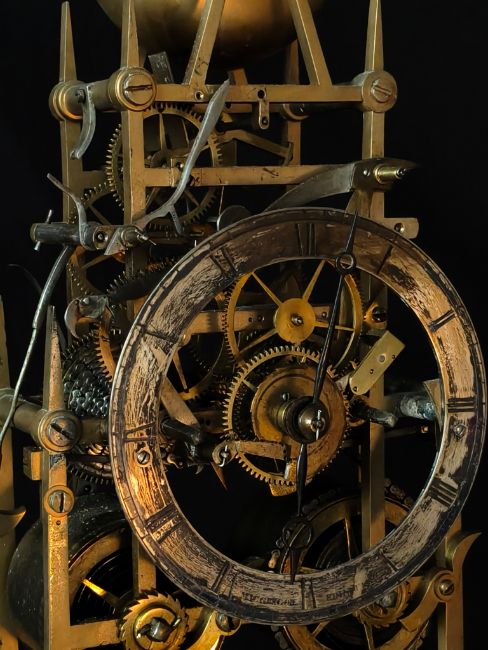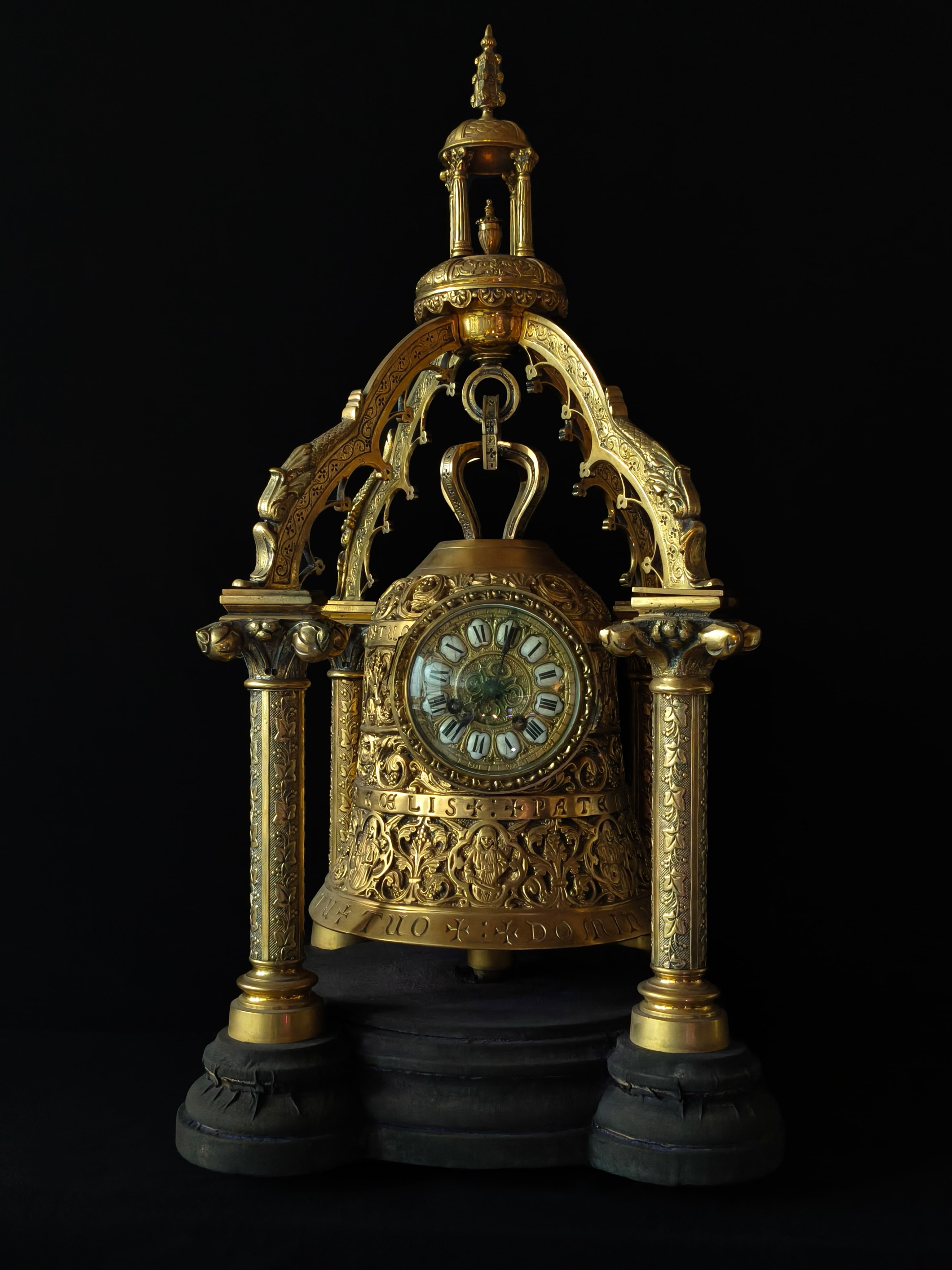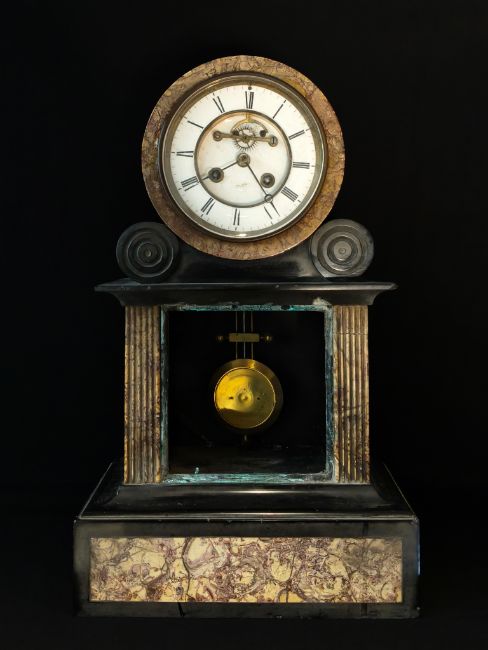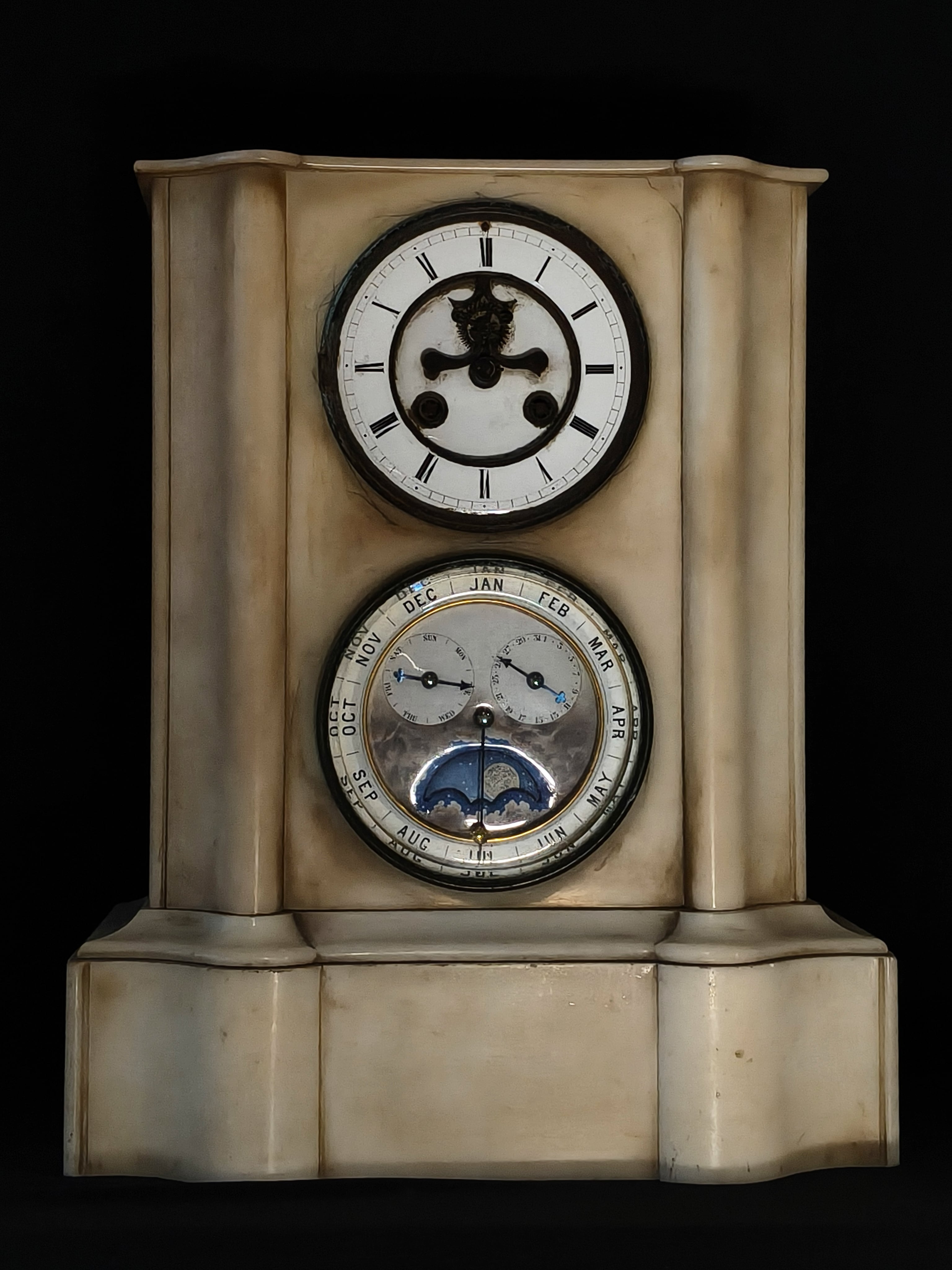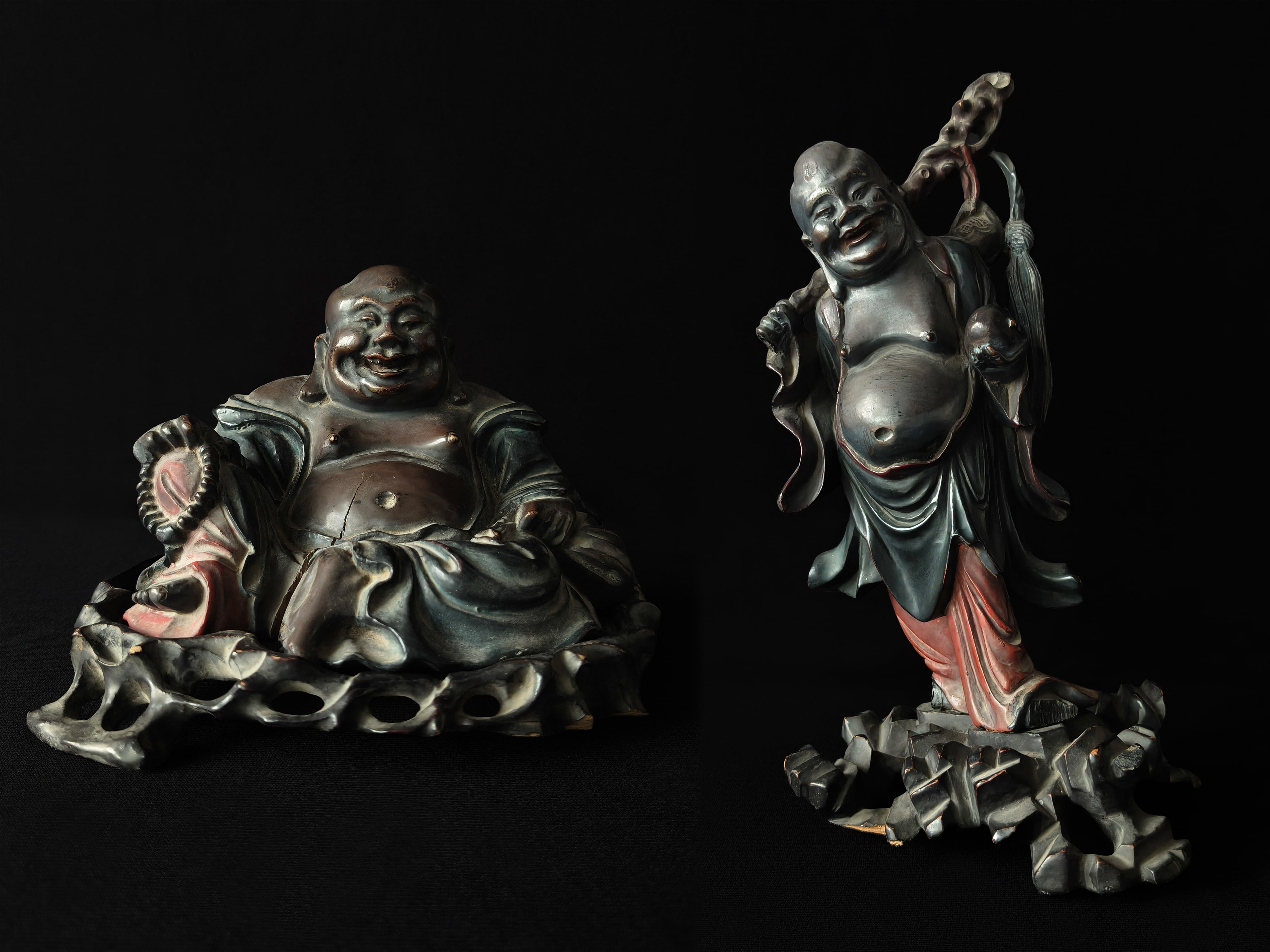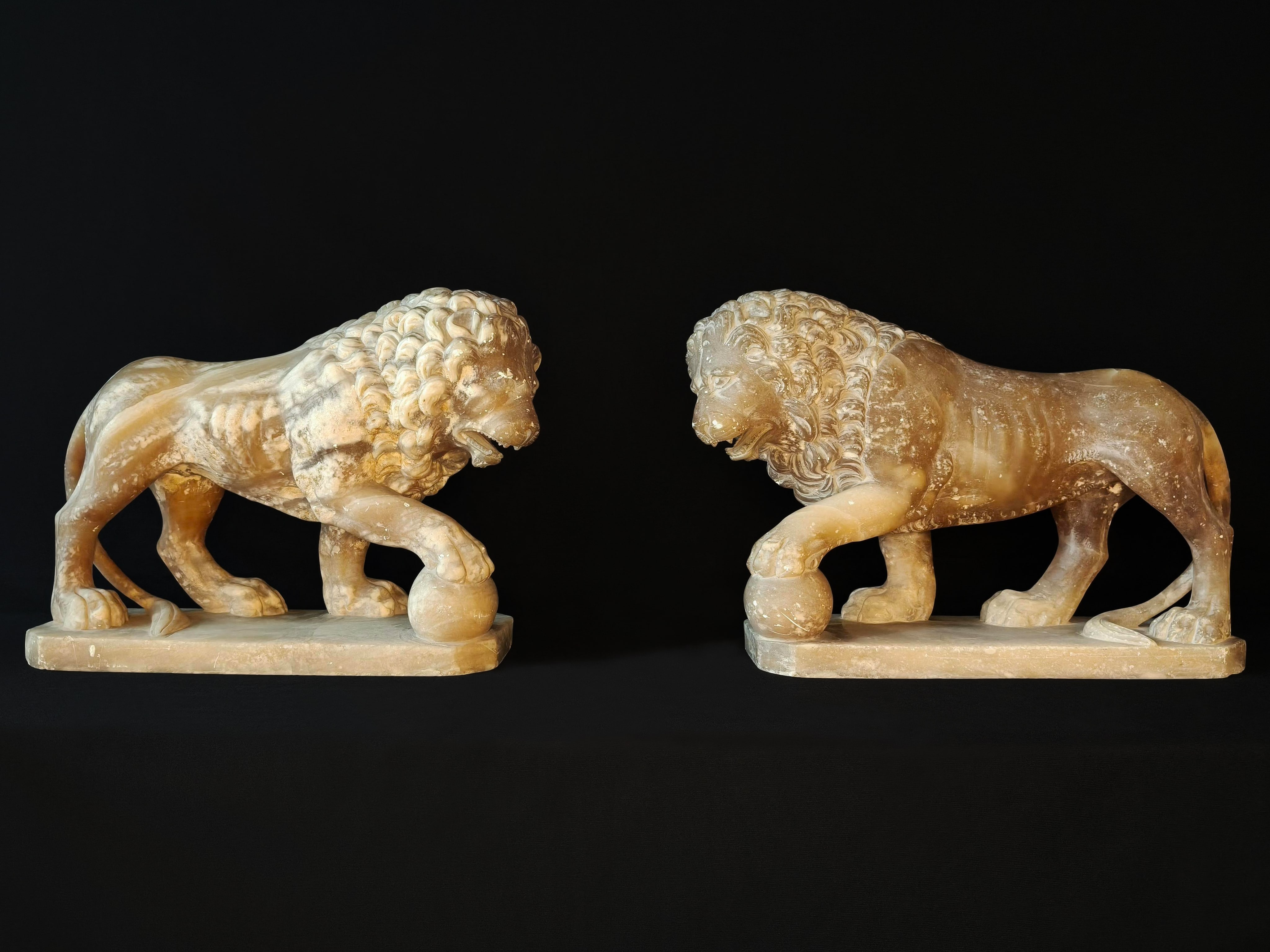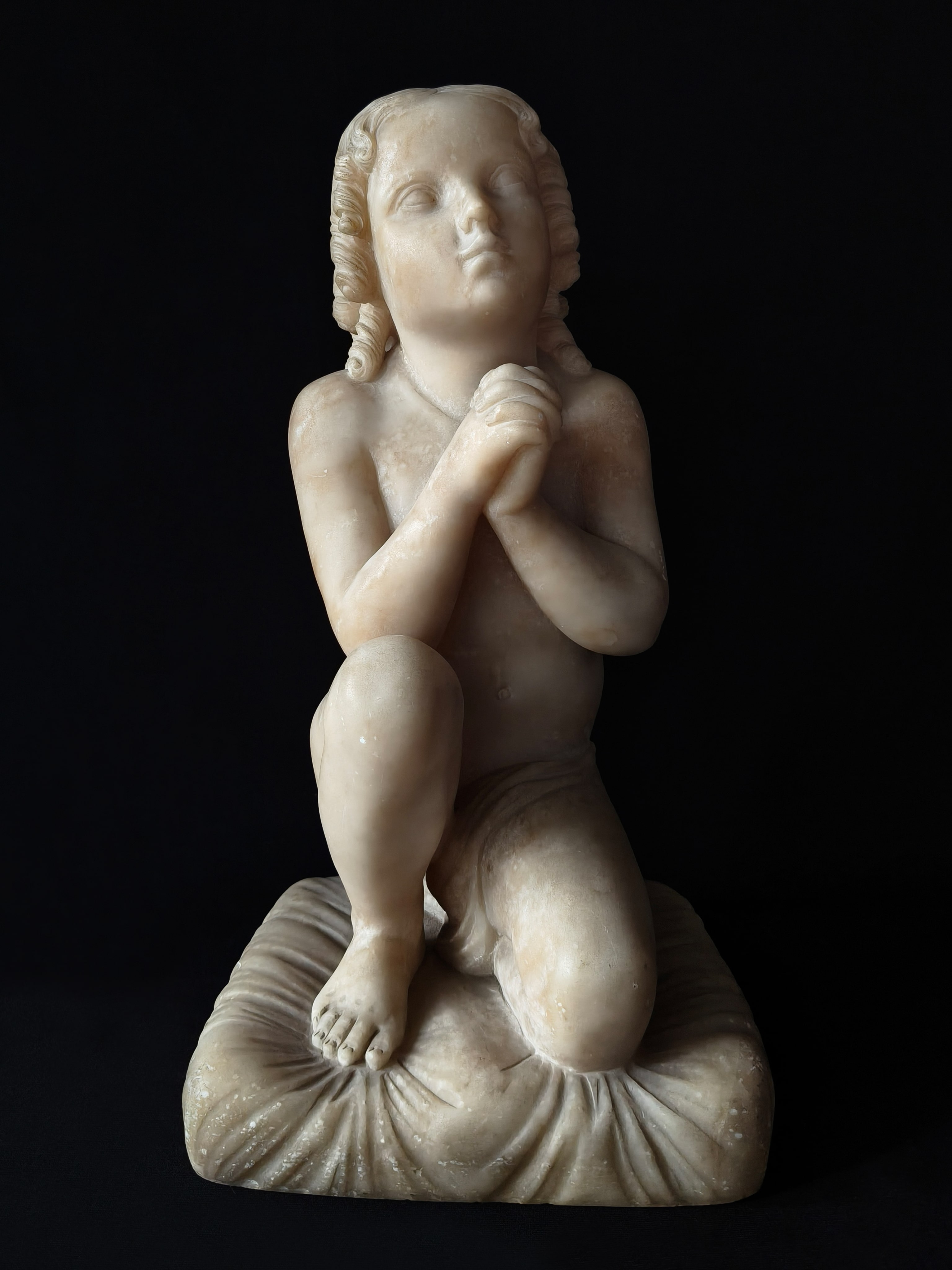If the porcelain of the previous chapter revealed Sir Mangaldas Nathubhai’s eye for refinement, the timepieces and sculptural treasures in the family capture the rhythm and sentiment of his world. Within the family homes at Girgaum, Malabar Hill, and later Commonwealth, these pieces measured the passing of hours and reflected the family’s cosmopolitan curiosity. Passed down and faithfully wound through four generations, they speak of precision, devotion, and inherited grace.
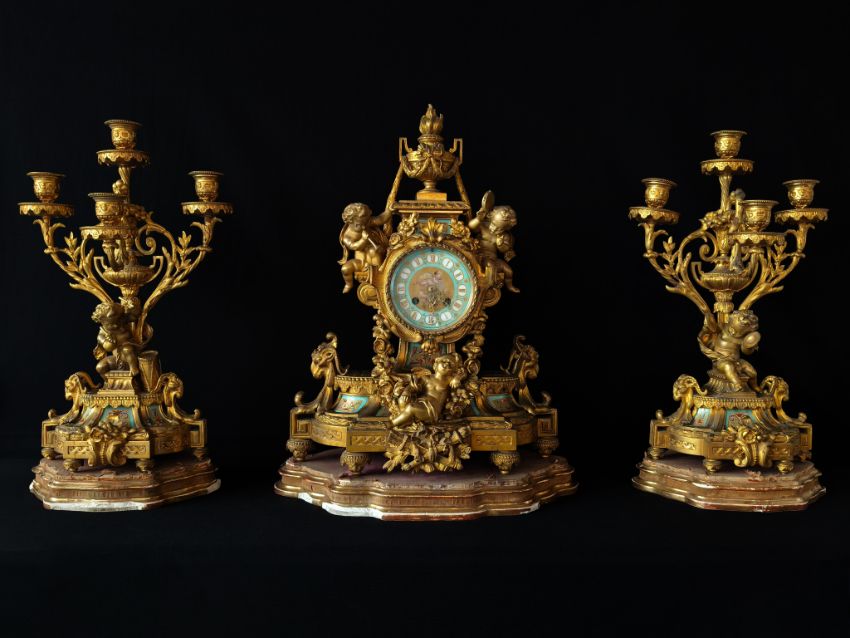
French Ormolu and Porcelain Mantel Clock, Louis XVI Revival
Among the most striking pieces is a French Ormolu and Porcelain Mantel Clock with its companion candelabra, a three-piece garniture cast in gilt bronze and turquoise porcelain. Its painted cherub dial, mythological figures, and flaming-urn finial evoke the splendour of Louis XVI revival design. Marked by Japy Frères & Cie, the celebrated Parisian maker honoured at the 1855 Exposition Universelle, it exemplifies how European showpieces reached elite Bombay drawing rooms, merging utility and opulence.
A Brass Skeleton Clock by James McGregor, Edinburgh
Equally captivating is the Brass Skeleton Clock signed James McGregor, Edinburgh. Set within a glazed wooden case, its exposed gears and pendulum turn mechanics into a spectacle in its own way. Such clocks, born of the Industrial Revolution’s fascination with technology, were prized for making time visible. Within the Mangaldas family, it became a living heirloom, remembered for the steady rhythm that continued through four generations.
A French Gothic Revival Gilt-Bronze Bell-Form Mantel Clock
The French Gothic-Revival Bell-Form Clock, also bearing the mark of Japy Frères, transforms a domestic object into miniature architecture. Cast as a suspended bell adorned with tracery, masks, and Latin inscriptions—Dominus vobiscum, Pater noster, Anno Domini—it echoes the grandeur of cathedral bells. Its pointed arches and pierced scrolls represent the 19th-century passion for medieval forms, reimagined for the Victorian mantel.
French Black Marble Pendulum Mantel Clock
A companion to these is the Black Marble Pendulum Clock by Samuel Marti et Cie, a study in neoclassical restraint. The dial floats above a visible pendulum, combining decorative poise with mechanical precision. It remained in use within the family for decades, remembered by descendants as one of the clocks their father continued to wind and keep running.
Family recollection: “The skeleton and the marble clocks worked through my father’s generation,” remembers Mita Sujan, Sir Mangaldas’s great-great-granddaughter. “My father would wind them—just as his father and grandfather had done before him. Their gentle ticking filled the house; their winding was an act of care.” Such memories turn these timepieces from instruments of measure into vessels of family affection.
A French Alabaster Calendar Mantel Clock
Equally refined is the French Alabaster Calendar Mantel Clock, its pale case enclosing enamel dials that record the hour, date, and moon phase. Such pieces served as mechanical almanacs, bringing order to the household and reminding us how the lunar cycle once guided both agriculture and social life. The movement, also by Japy Frères, bears the company’s 1855 honour.
Chinese Carved Hardwood Figure of Budai (Laughing Buddha)
Among the sculptural treasures, two Chinese Hardwood Figures of Budai, the Laughing Buddha, bring warmth and memory. One standing, the other seated, they were rubbed for luck by generations of children—an intimate gesture that turned imported symbolism into family ritual.
Pair of Carved Alabaster Lions, After the Medici Lions
Another striking lot is a Pair of Carved Alabaster Lions after the famed Medici guardians of Florence, their translucent stone glowing softly under light.
Italian Alabaster Sculpture of a Praying Boy After Luigi Pampaloni
The Italian pieces add a quieter grace: an alabaster Guardian Angel, serene in prayer; Canova’s Three Graces, their intertwined forms capturing unity and beauty; and a Praying Boy after Luigi Pampaloni, remarkable for its subject with delicately carved curls, serene in prayer, perched on a plush cushion. These sculptures, devotional and neoclassical in turn, carried European ideals of harmony into the Bombay home.
Together, the timepieces and treasures from the Mangaldas Estate trace a continuum—from the clockmaker’s precision to the sculptor’s poise, from European ateliers to Bombay parlours. Wound, polished, and cared for across generations, they preserve not only the measure of hours but the intimacy of family memory—a living record of time kept beautifully now open to the public for the very first time.
